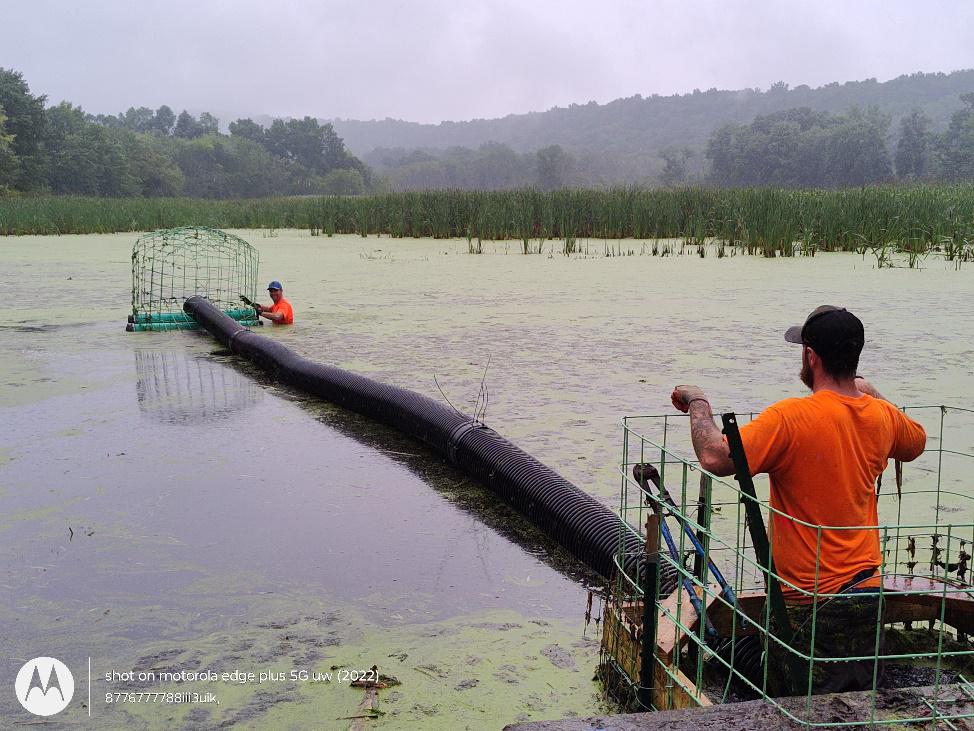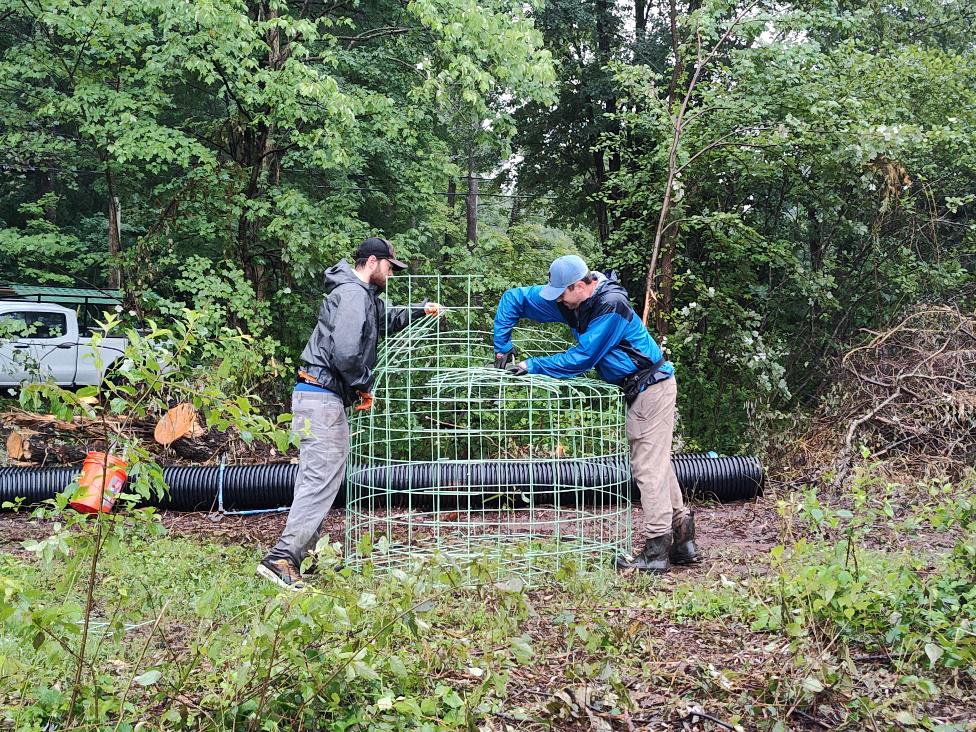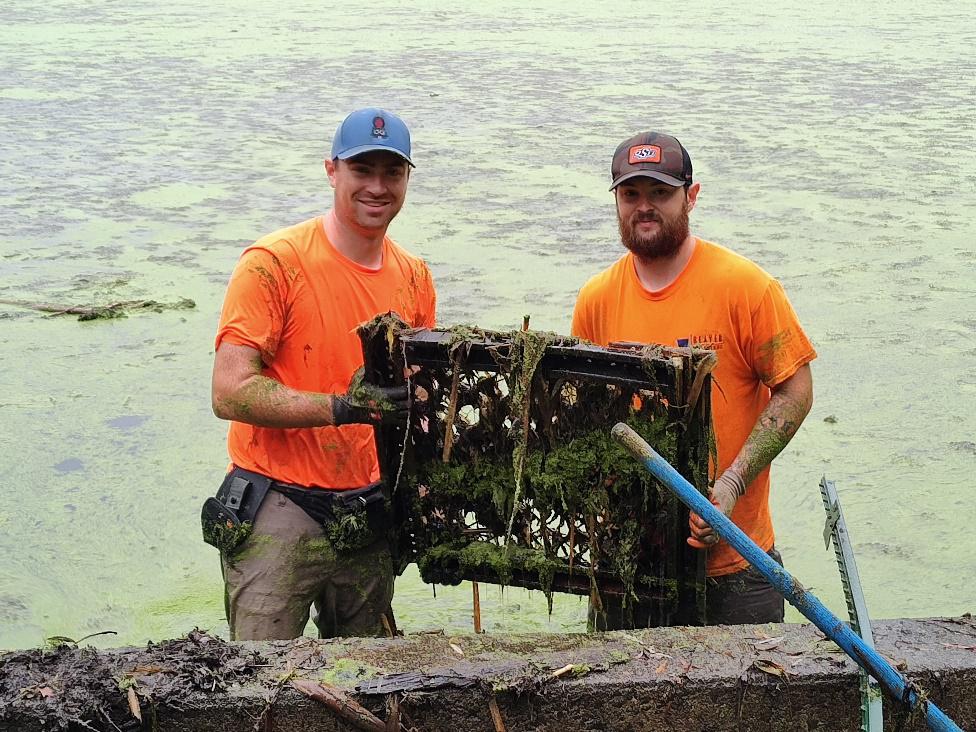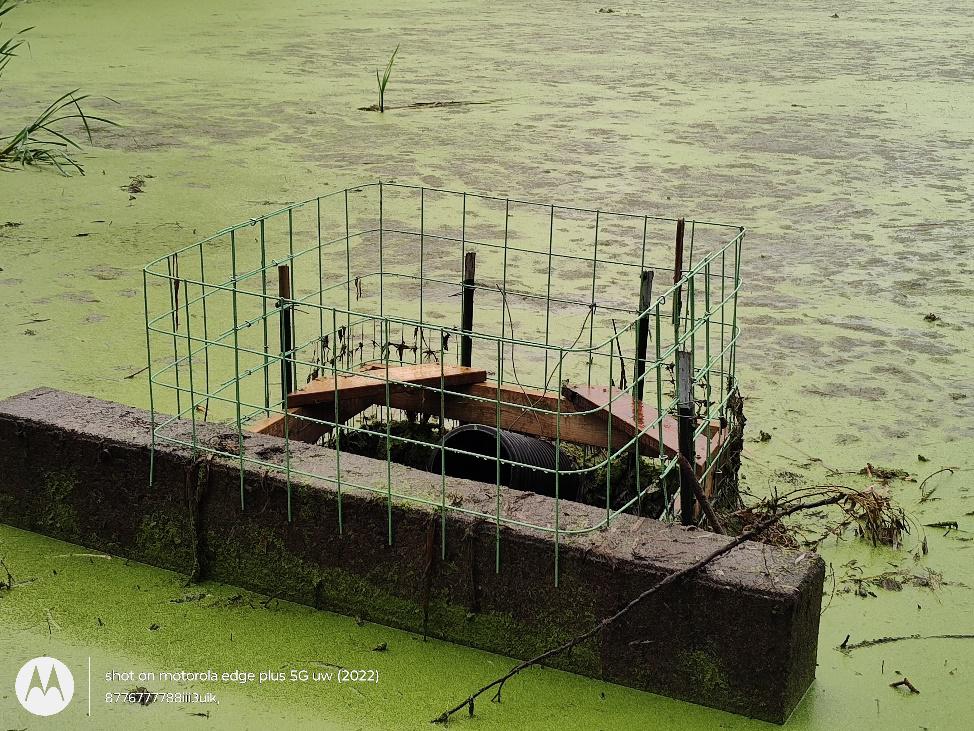Beaver Conservation and Habitat Restoration
Beavers are often referred to as a “keystone species” by wildlife managers due to their unique ability to dramatically alter their environment. By constructing or expanding ponds, beavers create habitats that support a wide range of species. Beaver dams raise water levels and foster ecosystems that benefit plants, birds, fish, bats, and other mammals dependent on these wetland environments.
In 2023 the Traprock Ridge Land Conservancy (TRLC) welcomed beavers to a small pond on our Griffin Marsh Property near Holcomb Street in East Granby. Their dam-building activities increased the water levels, resulting in decreased invasive plant species and creating a thriving ecosystem. Nesting green herons, wood ducks, muskrats, and occasional otters now frequent the pond. Local wildlife such as bears, bobcats, Canada geese, and numerous migrating bird species have also been observed in the revitalized marshlands.
Addressing Challenges: Flooding Concerns and Beaver Management While beaver activities have significantly improved the marsh habitat, they can sometimes conflict with human infrastructure. Heavy rains in 2024 caused water levels to rise considerably, raising concerns about potential flooding across a nearby road. TRLC, committed to both conservation and public safety, partnered with Beaver Solutions, a Massachusetts-based company specializing in humane beaver management. A plan was jointly developed that would keep the desired water levels but avoid flooding.
The Beaver Deceiver Solution The plan called for installation of a “beaver deceiver” more formally known as a fence and pipe flow device. The device limits the maximum rise of the water level in the pond by using a 40’ long 12” diameter flexible pipe, with water channeled from the bottom of the pond and out into the brook that drains it. Wire cages built around each end of the pipe prevent the beavers from filling them with mud or debris to stop the water flow. TRLC funded the project and Beaver Solutions installed the system.
Since the project was completed, no flooding has occurred. The Griffin Marsh continues to flourish, and the residents of the marsh continue to thrive.




